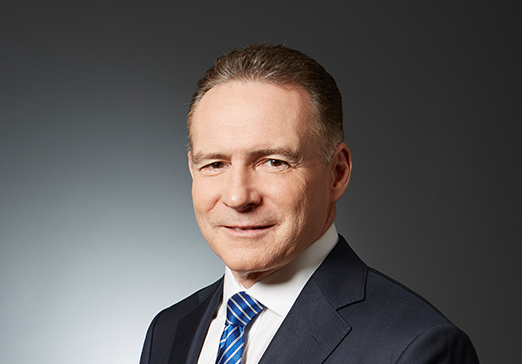Q1 2024 Strategy & Market Reviews
Each quarter, our Investment Management teams publish their key observations and portfolio updates across Global Equity and Fixed Income markets. This is a summary of our views for the First Quarter of 2024. You can download the full reports via the links shown below.
KEY OBSERVATIONS
During the first quarter of 2024, the S&P 500 was up +10.6% in U.S. dollars, or +13.3% in Canadian dollars. We believe that this large advance was primarily the result of a strengthening economy, growing earnings, and the expectation of rate cuts later this year.
Price/earnings multiple expansion – or an increase in what investors are willing to pay for every dollar of earnings – is not unusual at this point in the cycle. This leads to stock valuations that are higher than historical averages, however, we don’t believe they are unreasonable today.
Last week’s update by the Federal Open Market Committee of the U.S. Federal Reserve seems to support our expectation of lower interest rates in the second half of 2024. However, with recent bumps in the inflation rate, the market’s expectation of as many as six rate cuts this year has been pared back to about three. This sent mixed signals to the fixed-income markets, which saw rates drift modestly higher. However, credit spreads remained strong and returns were bifurcated, with corporate bonds outperforming their government counterparts.
S&P 500 earnings grew +4.1% year-over-year last quarter, much stronger than the 1.5% market consensus growth rate at the end of 2023. This may have been skewed by positive earnings surprises in the Magnificent 7 Technology stocks, however, it was the second quarter of overall positive earnings growth after three negative quarters, which gives us some confidence in the consensus calendar forecasts, which call for earnings to reaccelerate to double-digit levels in 2024 and 2025. Growing earnings could provide a catalyst for further market appreciation.
This is a US election year, and while we can’t rule out a pullback moving toward the November 5th election day, particularly as pullbacks of 5-10% typically happen most years at some point or another, stocks historically tend to rise regardless of which party is in the White House or controls the House and Senate.
Overall, we remain positive on the markets given that the upcoming monetary easing cycle and the decline in interest rates is likely to take place against a backdrop of solid economic growth, low unemployment, declining inflation and improving earnings.
NORTH AMERICAN EQUITY UPDATE

Peter Jackson, HBSc, MBA, CFA
Chief Investment Officer
Portfolio Manager, North American Equities
Our overall equity and cash exposure were unchanged this quarter at 95% and 5% respectively. Our U.S. equity exposure increased from 47% to 52,% while our Canadian exposure decreased from 48% to 43%. It is important to note that many of our clients’ portfolios are invested in our North American plus International Equity strategy, meaning that the actual weights of US and Canada within their equity holdings will be proportionately less than this given the allocation to international companies.
During the quarter, we continued to shift our allocation in favour of US equities (+5%) over Canadian equities (-5%). While there are pockets of strength in Canada, overall forward 12-month earnings growth remains negative in Canada as compared to positive earnings and improving breadth of earnings in the U.S. Our Canadian holdings are focused on these pockets of strength and most of the Canadian companies we own have globally diversified revenue sources despite a Canadian headquarters.
We added two new investments during the quarter:
Mastercard operates a digital payment network with integrated solutions that links consumers, banks, merchants, and merchant acquirers. Mastercard’s business is protected by a network effect as merchants are more likely to subscribe since so many consumers carry its cards, and consumers are more likely to carry a card that is accept in so many places. We think Mastercard has a long runway for growth as they benefit from the ongoing secular shift from cash to electronic payment, especially outside of North America, and the continued adoption of their value-added services, which include fraud detection, data analytics, and loyalty programs.
O’Reilly Automotive owns and operates automotive part distribution warehouses and retail stores predominantly in the United States, but also in Mexico and Canada. O’Reilly serves both the do-it-for-me (pro) market as well as the do-it-yourself (consumer) market through its 5,600 stores. O’Reilly has 30 distribution centres located in 30 major cities, and it has used its distribution advantage to build out its pro business, which now makes up 45% of its revenues. As a result, O’Reilly has better inventory turns, working capital management, and higher return on invested capital compared to most of its peers.
A detailed review of each company can be found in the full report per the link above.
GLOBAL EQUITY UPDATE

Phil D’Iorio, MBA, CFA
Portfolio Manager, Global Equities
Global equity markets started off 2024 with a bang. Some of the drivers were strong corporate earnings, anticipated interest rate cuts, and a turnaround in investor sentiment. Given this backdrop, stock market returns were strong across many geographic regions.
About a year ago, economists and investors were forecasting a U.S. recession due to the impact of stubborn inflation and higher interest rates. In March of 2023, approximately 65% of economists polled by Bloomberg were convinced the U.S. economy was headed for a serious downturn within 12 months. This widely held viewpoint has completely reversed.
Given the resilience of the U.S. economy and a significant decline in inflation, economists and investors have now largely abandoned their “hard” or “soft” landing recession predictions. Indeed, 45% of now believe the U.S. economy is headed for a “no landing” scenario, where inflation falls towards the Fed’s 2% target and economic growth remains firm.
Outside of the United States, the global economy is growing, although it remains sluggish across many parts of the world. Markets are now expecting the European Central Bank to cut rates in June, which should help the recovery across the Eurozone. In China, the economy remains weak but there is some recent evidence of positive momentum.
Good news has continued to come out of Japan, as its central bank raised interest rates for the first time since 2007. This is viewed as a sign that Japan may have finally won its fight against deflation, with prices now rising consistently for the first time in decades.
Overall, we are seeing encouraging signs across the largest economic regions outside of the United States and continue to have a favourable outlook for global equity markets.
We added several new investments across a variety of industries during the quarter, including Alimentation Couche-Tard, Mastercard, O’Reilly Automotive, and Vertex Pharmaceuticals in the Global portfolio, and Icon, Inditex, Itochu, Mastercard, and Shin-Etsu in the International portfolio.
A detailed review of each company can be found in the full report per the link above.

Owen Morgan, MBA, CFA
Portfolio Manager, Fixed Income
In Q4 2023, the yield curve decreased markedly, which resulted in the strongest quarterly performance by Canadian bonds in over 20 years. In Q1 2024, it would be difficult to repeat such a performance. Indeed, performance was mixed as rates drifted moderately higher and inflation continued to trend downwards, but not at the pace many would like it to.
Economic growth was stronger than expected during the quarter, with the US GDP figures meeting or exceeding the consensus estimates in each of December, January and February. Here in Canada, there was a very modest upside surprise in GDP growth in January. The impact from these results was the realization that, while progress in the inflation fight continued, it did not proceed as much as expected. This, in turn, meant that the long-awaited cut in interest rates by central banks would be delayed – known as the “higher for longer” narrative.
Nonetheless, we continue to believe that the fixed income market will be good for investors in 2024 with returns exceeding the rate of inflation and the opportunity to benefit from potential interest rate cuts by the central banks.
Credit spreads, or the difference in yield offered by a corporate bond versus a federal government bond, tightened over the first quarter, reflecting confidence that economic activity had exceeded expectations, and that the economic outlook had improved somewhat.
In terms of portfolio investment positioning, as we anticipate rate cuts in the relative near-term, it makes sense to extend the fund’s duration, which will positively impact valuations if the cuts do materialize. We also anticipate modest increases in weights in federal, provincial and/or investment grade corporate bonds. We will continue to have exposure to non-investment grade credits we identify that possess attractive risk-return prospects.
Looking ahead, we believe that any recession will be mild, or may not be experienced at all. This view is buttressed by continued low unemployment figures, providing a buffer against a consumer-driven shock to domestic demand. Further, rate cuts should also ease to a degree the mortgage-related stress on consumers and the economy.
In summary, absent a material and unforeseen shock, we firmly believe the remainder of 2024 will provide a constructive environment for fixed income investors.


